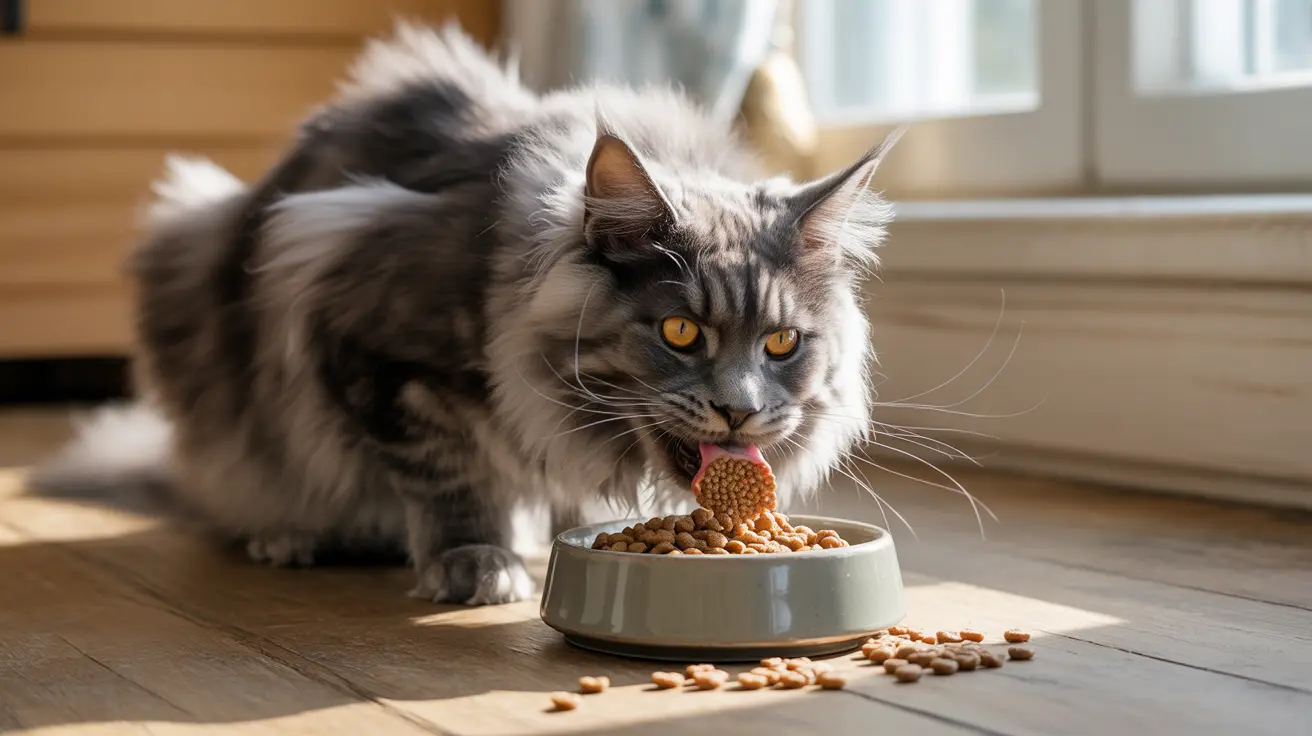The Natural Design of Cat Teeth and Eating
Cats are obligate carnivores with teeth specifically designed for hunting and eating meat. Their sharp canines and carnassial teeth are perfect for grabbing prey and tearing meat into manageable pieces. Unlike humans, cats don't have flat molars for grinding food - their teeth are primarily meant for cutting and shearing.
This dental structure explains why cats typically swallow food in chunks rather than chewing thoroughly. It's not laziness or bad manners - it's simply how they're built!
Why Cats Don't Need to Chew Much
Cats have evolved to eat quickly in the wild, minimizing their vulnerability to predators. Their digestive system is specially adapted to process unchewed food effectively. Their stomach acids are much stronger than humans', allowing them to break down larger pieces of food efficiently.
Additionally, cats' jaws can only move up and down, not side to side like humans and herbivores. This limited jaw movement further explains their tendency to swallow food with minimal chewing.
When Should You Be Concerned?
While minimal chewing is normal, there are some situations that warrant attention:
- Frequent vomiting or regurgitation after meals
- Difficulty swallowing or choking on food
- Excessive drooling while eating
- Sudden changes in eating habits
- Dropping food while trying to eat
These symptoms could indicate dental problems, digestive issues, or other health concerns that require veterinary attention.
Managing Your Cat's Eating Habits
If you're concerned about your cat's eating speed or want to encourage safer eating habits, consider these strategies:
- Use puzzle feeders or slow-feed bowls
- Feed smaller portions more frequently
- Choose appropriately sized kibble for your cat's age and size
- Consider wet food alternatives if your cat struggles with dry food
- Monitor your cat during meals for any signs of distress
Frequently Asked Questions
Why do cats mostly swallow food without chewing it thoroughly?
Cats swallow food without much chewing because their teeth are designed for tearing rather than grinding, and their digestive system is adapted to process unchewed food efficiently. This behavior is inherited from their wild ancestors who needed to eat quickly to avoid predators.
How can I tell if my cat is having dental pain that affects their chewing?
Signs of dental pain include drooling, dropping food while eating, eating on one side of the mouth, bad breath, reduced appetite, and pawing at the mouth. If you notice these symptoms, consult your veterinarian.
Is it normal for cats to eat their food very quickly or in large pieces?
Yes, it's normal for cats to eat quickly and swallow food in larger pieces. However, if this leads to frequent regurgitation or choking, you should take steps to slow down their eating.
What risks are associated with cats swallowing unchewed kibble or food chunks?
The main risks include choking, regurgitation, and potential digestive discomfort. However, these risks are generally minimal unless your cat shows signs of distress or regularly vomits after meals.
How can I help slow down my cat's eating and encourage safer chewing habits?
Use slow-feed bowls, puzzle feeders, or food-dispensing toys. You can also spread meals throughout the day, use larger kibble pieces that require more manipulation, or place obstacles like clean golf balls in their food bowl to slow eating.
Conclusion
While it may seem concerning to watch your cat gulp down food with minimal chewing, this behavior is completely natural and generally safe. Understanding your cat's biological adaptations can help you provide appropriate care while recognizing when intervention might be necessary. By monitoring their eating habits and making adjustments when needed, you can ensure your feline friend maintains healthy and safe eating practices.






